Artillery. Large caliber. 2С7 "Peony" inside and out
Continuing the theme of the artillery weapons of the Russian army, we turn to the story of the gun, which is difficult not to see at any exhibition, in any museum or any other venue where it is exhibited. A weapon that can be called a very small number of gunners by the native.
As you understand, we are talking about the next flower in the bouquet of artillery systems, 203-mm self-propelled artillery cannon of the High Command Command 2-7 "Peony". The 2C7 ACS is one of the most powerful field artillery systems in the world today.
If SAU 2C5 "Hyacinth" gives the impression of God of war, then SAU 2C7 "Peony" puts pressure on the senses in a completely different way. By the way, almost all high-power tools affect our feelings in the same way. It would be more correct to, after all, another definition - increased power!
This system is rather a punishing sword of God. The sword, which is almost impossible to resist. The sword, from which you can not hide. The sword, bearing inevitable punishment.
The story of this system must start from afar. Since the reign of N. S. Khrushchev. Many gunners still recall this General Secretary of the Central Committee of the CPSU with a nasty feeling. The man who decided to "kill God", kill the barrel artillery. The war, according to Khrushchev, is the exchange of nuclear strikes with the help of missiles and bombers.
But, despite this point of view of the country's leadership, the army understood that a global conflict would lead to the destruction of the planet as such. Use nuclear weapon huge power is stupid. Therefore, modern wars will no longer be as global as World War II. They will turn into a series of local conflicts.
But to give up nuclear weapons is stupid. The fact that it is impossible to achieve a huge caliber and a huge amount of explosives in ammunition, can be achieved by using a nuclear charge and missiles. No wonder the power of nuclear weapons in TNT equivalent are measured in kilotons. Thousands of tons!
Talk about the need to create weapons capable of firing projectiles with "nuclear stuffing" began openly in the middle of the 60's. This statement concerns not only the Soviet Union, but also its antipode - the United States. The military theorists of both countries arrived at the same conclusion at about the same time.
Thus, the second half of the 60-ies is characterized by the development of several artillery systems at once, capable of striking at the enemy with low-power nuclear ammunition. The army needed a "new old" carrier of nuclear weapons.
In 1967, an order was issued by the USSR Ministry of Defense Industry to begin developing high-powered self-propelled artillery. The main requirement was the firing range and the possibility of using a low-power nuclear charge. The rest of the restrictions were not delivered to designers. The main thing - the range of at least 25 km for conventional OFS.
Research to determine the appearance and basic performance characteristics of self-propelled guns of special power was initiated by order of the USSR Ministry of Defense Industry No. 801 from December 16 1967. On instructions from the Kalinin Artillery Academy, chose the caliber of the installation: 210, 72-mm gun C-180 and 23-mm coastal gun MU-180.
At the conclusion of the Academy, the ballistic solution of the 210-mm C-72 gun was considered the most appropriate. However, despite this, the Barricades plant, to ensure the continuity of the manufacturing techniques of already developed B-4 and B-4M guns, proposed reducing the caliber from 210 to 203 mm. The proposal was approved by the Grau.
At the same time, work was also done on the selection of the chassis and layout for the future heavy ACS:
- chassis variant of the MT-T multi-purpose tractor, made on the basis of tank T-64A - “Object 429A”;
- version of the chassis on the basis of a heavy tank T-10 - "Object 216.c1";
Due to the fact that an open installation of the tool was assumed, as well as due to the high resistance force to rollback (135 t), the existing chassis were not suitable for ACS. Therefore, it was decided to develop a new chassis with the maximum possible unification of the nodes with the tanks in service with the USSR.
As a result, the ministry made a Solomon decision. In 1969, the Kirov factory became the lead developer of the Pion. The construction of the artillery component engaged designers "Barricades".
Requirements for the new ACS were quite tough. Beskoshetnaya shooting range 8,5 — 35 km (for OFS). ACS must be sufficiently mobile. But most importantly, the system must shoot 3BB2 projectile! This marking was assigned to a nuclear warhead projectile. Those. Initially, designers were given the task to create a "nuclear cannon."
The chief designer of the chassis was N. S. Popov.
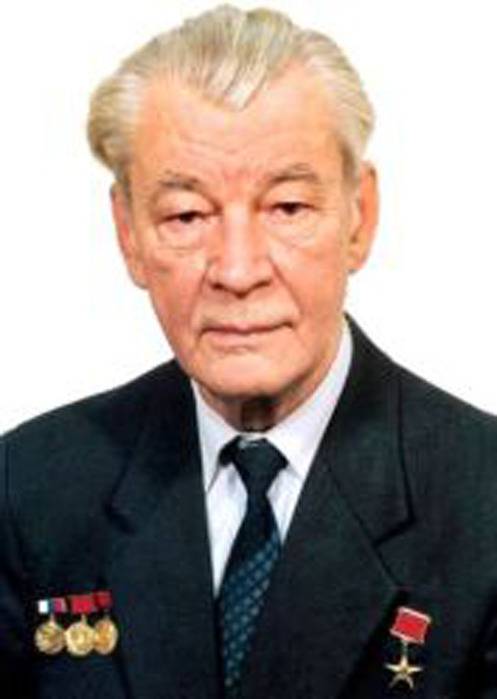
G. I. Sergeev became the chief designer of 203-mm 2A44 guns.
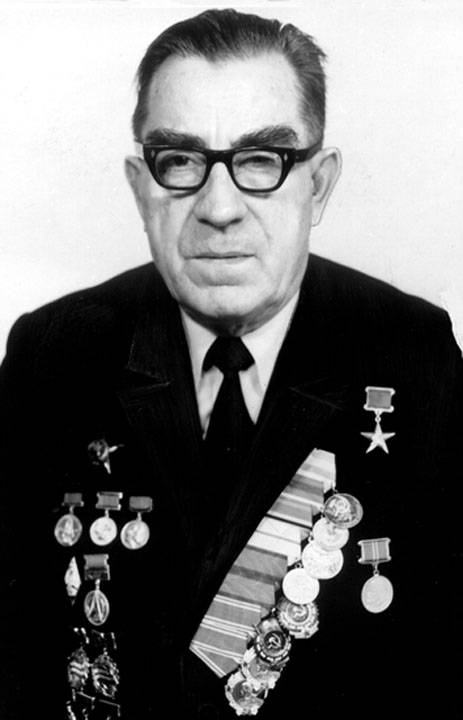
To close the topic of nuclear weapons, you need to run ahead. "Peony" really shot a shell 3BB2! Developed in 1977 in the All-Union Scientific Research Institute of Technical Physics specifically for the ACS 2C7.
More precisely, a stationary cannon with a barrel from an 2C7 gun fired. But it was only once. Therefore, we cannot talk about stable shooting on the basis of tests. One shot in the conditions of the landfill. But will the second be necessary in a combat situation? Given the charge power in 2 kilotons ...
In the period from 1973 to 1974, two prototypes of the 2 – 7 ACS were manufactured and sent for testing. The first sample was running trials at the site Strugi Red. The second sample was tested by shooting, but could not meet the requirements for the firing range. The problem was solved by the selection of the optimal composition of the powder charge and the type of shot.
In 1975, the new ACS was put into service, and from next year it began to be mass-produced and enter the artillery brigades of special power. 2С7 "Peony" is designed to suppress and eliminate the means of a nuclear attack (SNS), artillery, mortars, equipment, logistics, command and control points, enemy manpower.
We turn directly to the ACS itself. Moreover, it is really interesting even for a non-expert.
The self-propelled gun "Peony" is made according to a reckless scheme with an open installation of the gun in the aft part of the hull. On the march all the crew members are housed in the ACS building.
The case is divided into four compartments. In the front part there is a department of management with a place of commander, driver and a place for one of the members of the calculation.
Behind the department of management is the engine compartment with the engine.
Behind the engine-transmission compartment there is a compartment of calculation, in which the stacking with projectiles is located, the place of the gunner is traveling and the places for 3 (in the modernized version of 2) are members of the calculation.
In the aft compartment there is a folding plate-coulter and the gun of ACS.
The 2C7 case is made of two-layer anti-bullet armor with a thickness of 13 mm outer sheets, and 8 mm internal sheets.
The calculation, located inside the ACS, is protected from the effects of the use of weapons of mass destruction. The body reduces the effect of penetrating radiation three times.
The main implement is loaded with the ACS from the ground or from the truck using a special lifting mechanism installed on the platform on the right side of the main implement. Charging while it is to the left of the gun, controlling the process using the remote control.
By tradition, we will pay special attention to the instrument. Rifle gun 2А44 developed by OKB-3 (design bureau of the plant "Barricades").
The barrel of the gun is a free pipe connected to the breech. In the breech is a piston valve. The barrel of the gun and the recoil devices are placed in the cradle of the swinging part.
The swinging part is fixed on the upper machine, which is mounted on the axis and fixed by scraps.
Anti-recoil devices consist of a hydraulic brake recoil and two pneumatic knuckles arranged symmetrically with respect to the bore. This scheme of recoil devices allows you to securely hold the sliding parts of the gun in the extreme position before firing at any angles of the vertical guidance of the gun.
The recoil length when fired reaches 1400 mm.
Sector-type lifting and pivoting mechanisms provide guidance for the tool in the range of angles from 0 to + 60 ° vertically and from −15 to + 15 ° horizontally.
The guidance can be carried out both by hydraulic drives, powered from the pump station SAU 2C7, and by means of manual drives.
The pneumatic counterbalancing mechanism serves to compensate for the moment of unbalance of the swinging part of the gun.
To facilitate the work of the members of the calculation, the ACS is equipped with a loading mechanism that ensures the supply of shots to the line of loading and sending them into the gun chamber.
The folding base plate, located in the rear of the hull, transmits the force of a shot to the ground, ensuring greater stability of the ACS. On the charge number 3 "Peony" could lead direct fire without installing a coulter.
The self-propelled Peony self-propelled gun is a 4 shot (for the upgraded version of the 8), the main ammunition of 40 shots is carried in the vehicle attached to the ACS.
Like any system, ACS "Peony" is constantly being upgraded. The emergence of new technical solutions, new production technologies, new materials leads to the improvement of tools and self-propelled guns in general.
The “Peony” SAU 2C7M “Malka” became the “Continuation” SAU 2С7. This is not another weapon. This is exactly the modernization of the Pion. Changes were the engine and chassis. Trials started in February 1985.
For receiving and displaying information from the car of a senior officer of the battery, the gunner’s and commander’s places were equipped with digital indicators with automatic data reception, which made it possible to reduce the time needed to transfer the car from the traveling to the combat position and back.
Thanks to the redesigned styling, portable ammunition was increased to 8 shots.
The new loading mechanism made it possible to load the gun at any vertical aiming angle. Thus, the rate of fire was increased by 1,6 times (up to 2,5 rounds per minute), and the fire mode - by 1,25 times.
To monitor important subsystems in the ACS, the regulatory control equipment was installed, which carried out continuous monitoring of the armament, engine, hydraulic system and power generating units.
Mass production started in 1986.
It is probably worth talking about another version of the 2A44 gun. A variant that was specially developed for the Navy. And which was not implemented only because of the principled position naval chiefs in large caliber as such.
"Pion-M" - the project of the ship artillery, developed on the basis of the gun 2А44 at the end of the 1970-s. The mass of the artillery without ammunition was 65-70 tons. The ammunition should have been 75 shots, and the rate of fire to 1,5 shots per minute. Artillery installation "Pion-M" was supposed to be installed on ships of the 956 project of the type "Modern".
Today, it’s stupid to talk about the correctness of this decision of the fleet management. You can only express your own opinion. It seems to us that the admirals “drowned” the Pion-M for nothing. It was very short-sighted to focus all attention on rockets. Time has shown that in some cases, high-tech weapons are more vulnerable than good old projectile. He does not care for enemy EW and other technical innovations.
The main TTH SAU 2А7 "Peony":
Mass, t: 46,5
Tool caliber, mm: 203,2
Angles of guidance:
- vertical: 0-60 °
- horizontal: 15 °
Maximum range, m: 37 500
Minimum range, m: 8 400
Mass of high-explosive fragmentation projectile, kg: 110
Rate of fire, rds / min: up to 2,5
Ammunition, shots: 4
Types of shells: high-explosive, high-explosive, special
Transfer time from traveling to combat, min: 5
Calculation persons: 6
Engine power, hp: 780
Maximum travel speed, km / h: 51
Cruising on the highway, km: 500
In service with the Russian Army today is the 327 units of the ACS "Peony" and "Malka". However, most of them (up to 300) are in storage.
During the operation in the Soviet Army self-propelled guns "Peony" have never been used in any armed conflict. After the signing of the Treaty on Conventional Armed Forces in Europe, all the Pion and Malka self-propelled guns were removed from the European districts and redeployed to the Siberian and Far Eastern military districts.
The only known combat episode of the 2C7 ACS is the war in South Ossetia, where the Georgian side of the conflict used a battery of six ACS 2C7. During the retreat, Georgian troops lost all six SPGs 2С7 in the Gori area. One of the installations was captured as a trophy by Russian troops, the rest were destroyed.
There is evidence of the presence of "Peonies" in the zone of armed conflict in the east of Ukraine as part of the Armed Forces of Ukraine, there is no reliable information on the application yet.
Unfortunately, we are still forced to stop and pause on this material. However, large calibers will return at the very beginning of autumn. So to all fans of big guns and howitzers - goodbye!
The authors heartily thank all true fans of artillery. Once again: see you again!
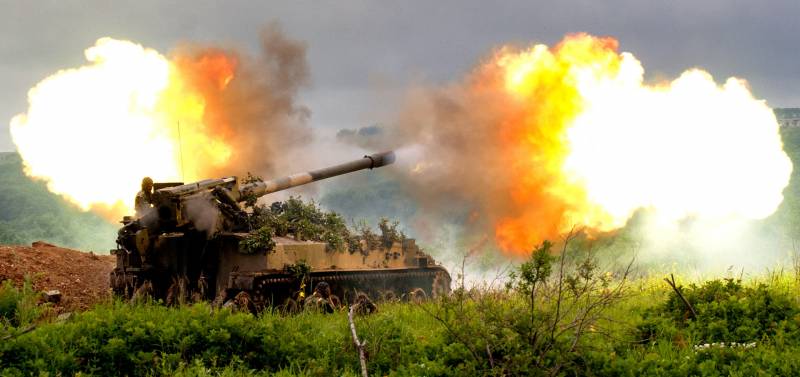
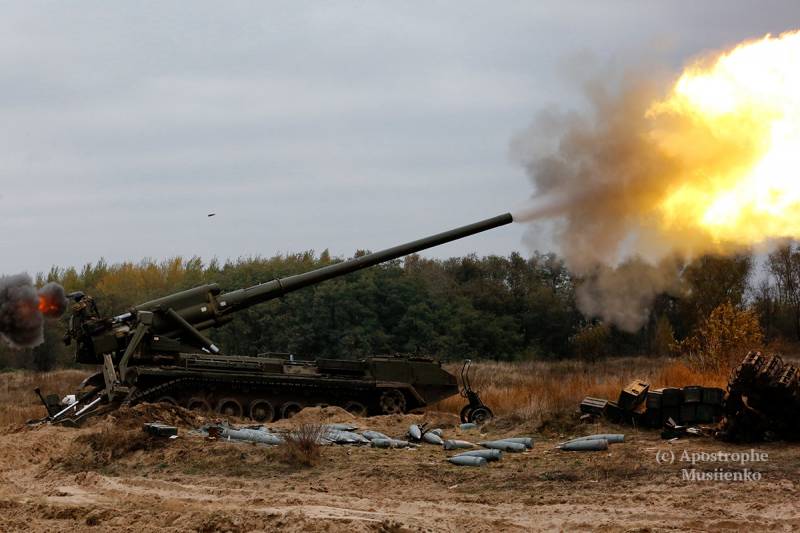
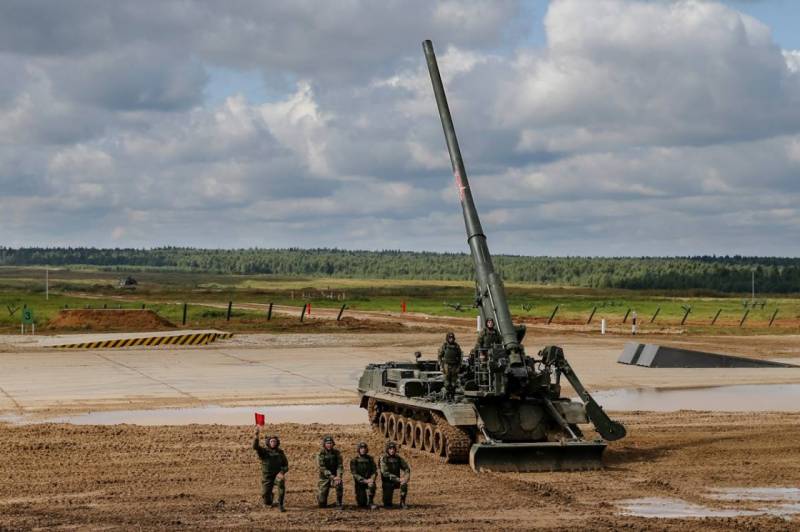
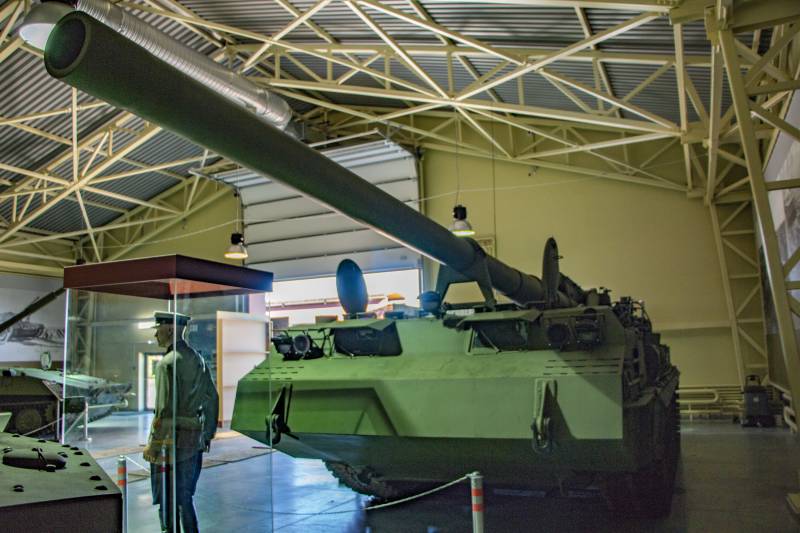
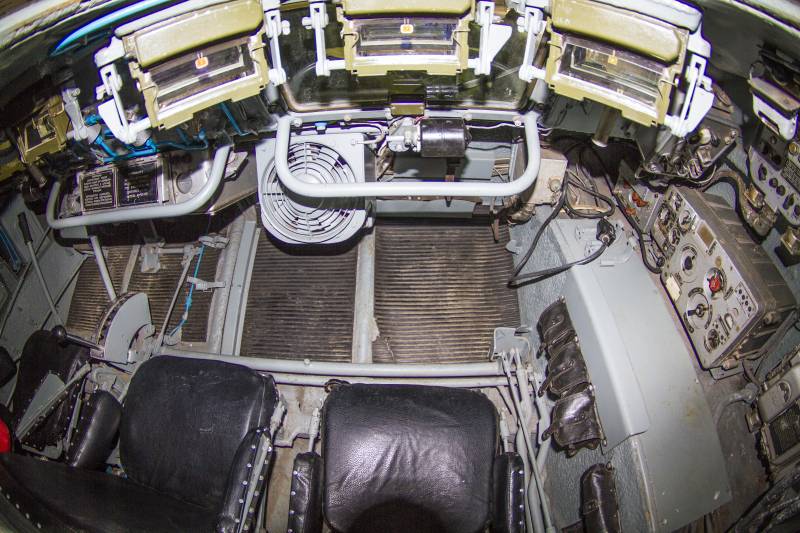
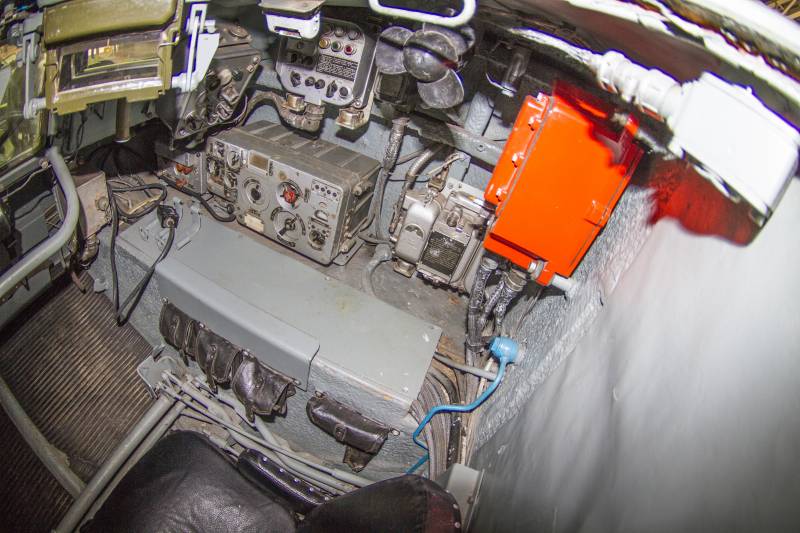
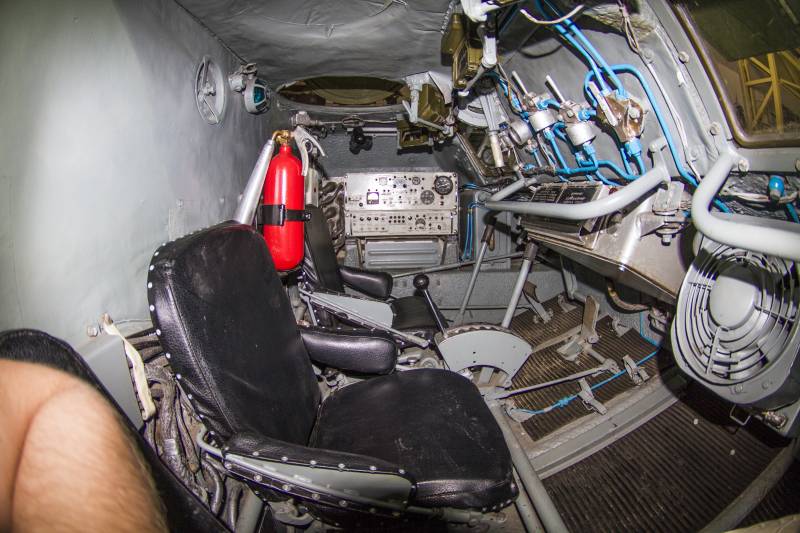
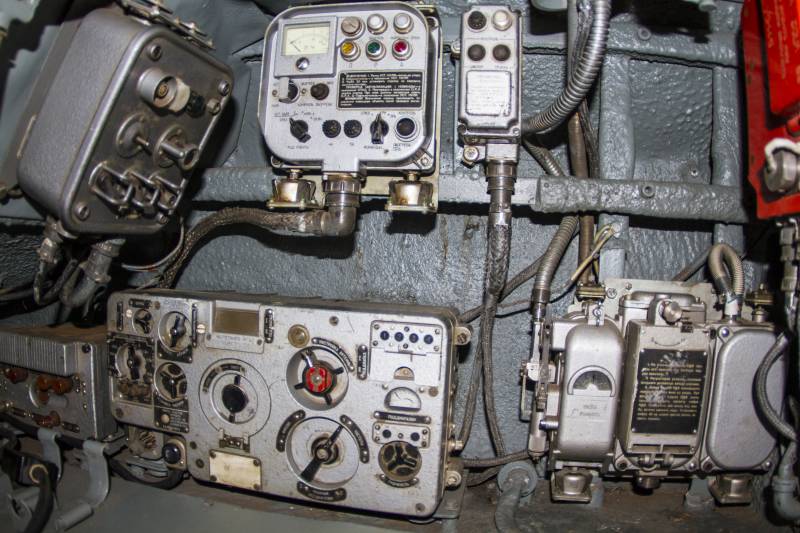
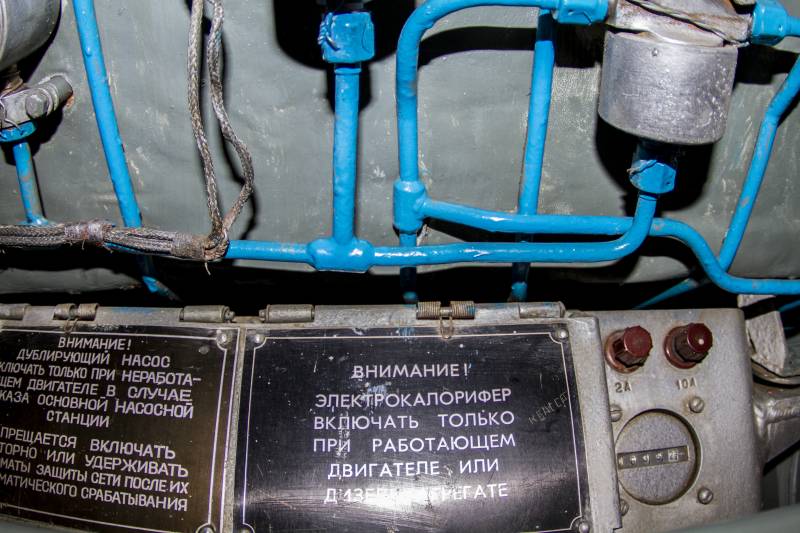
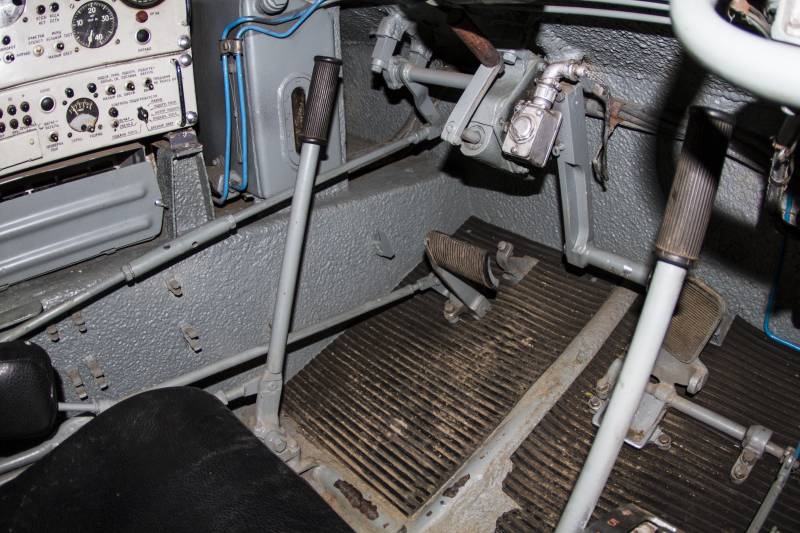
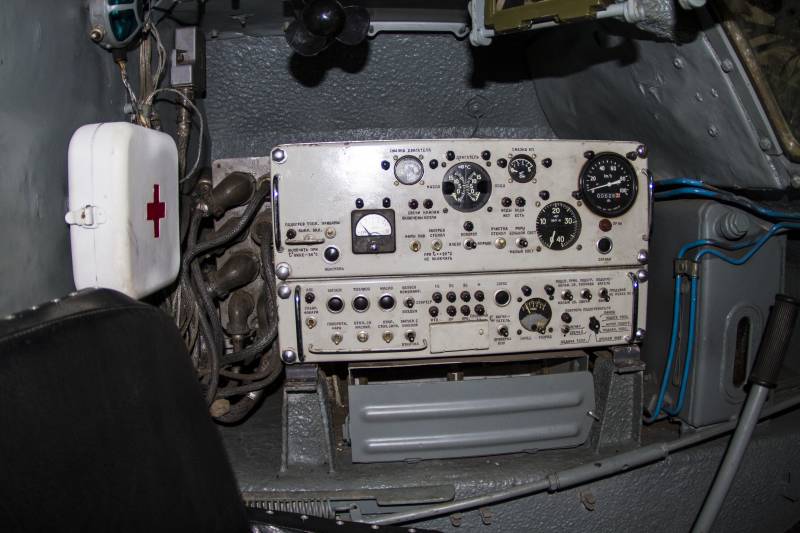
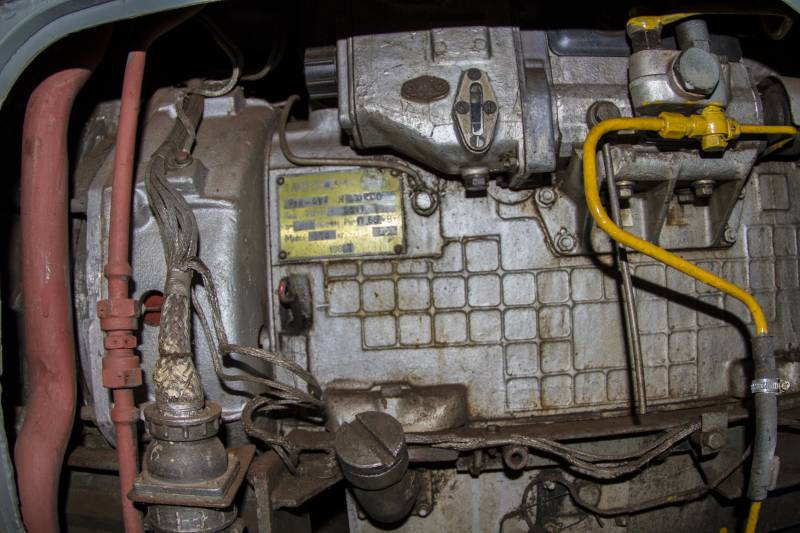
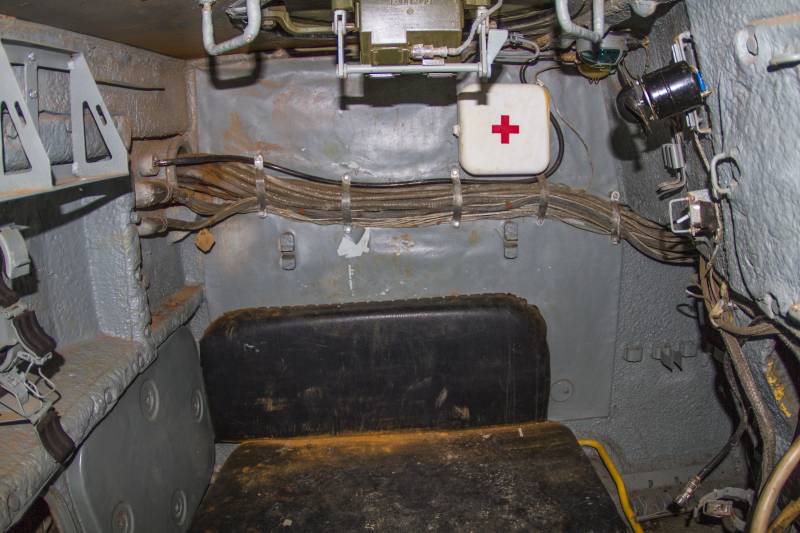
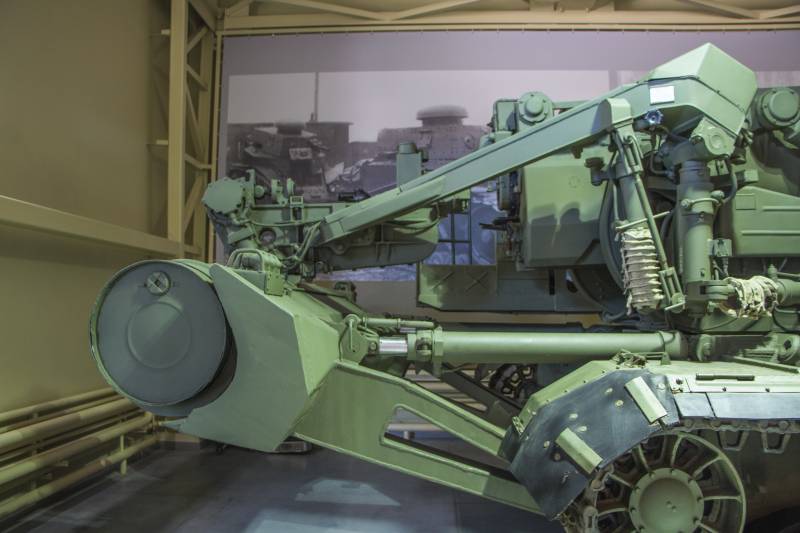
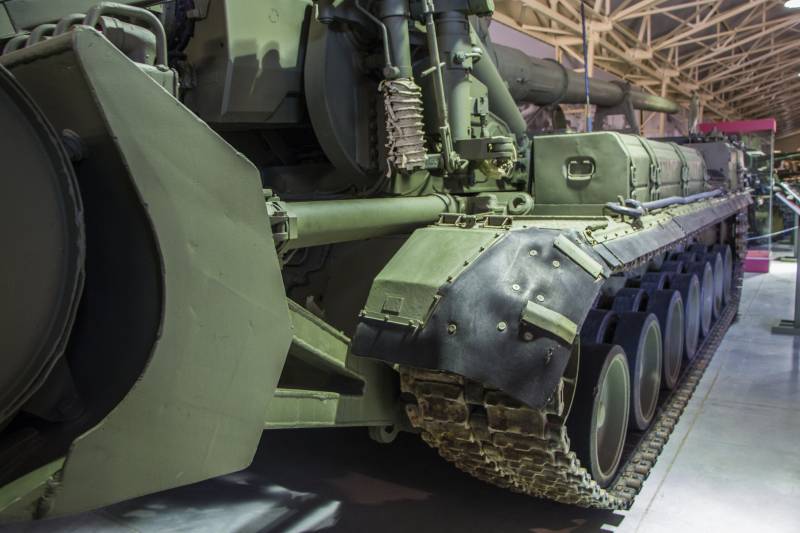
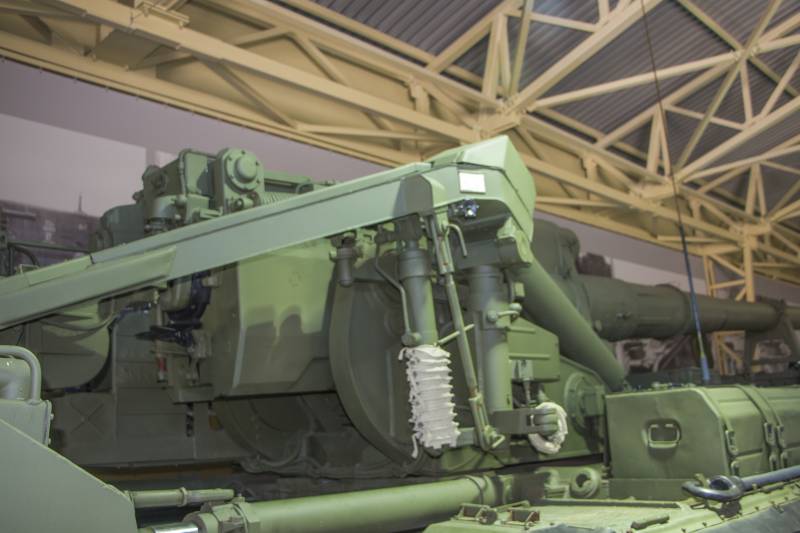
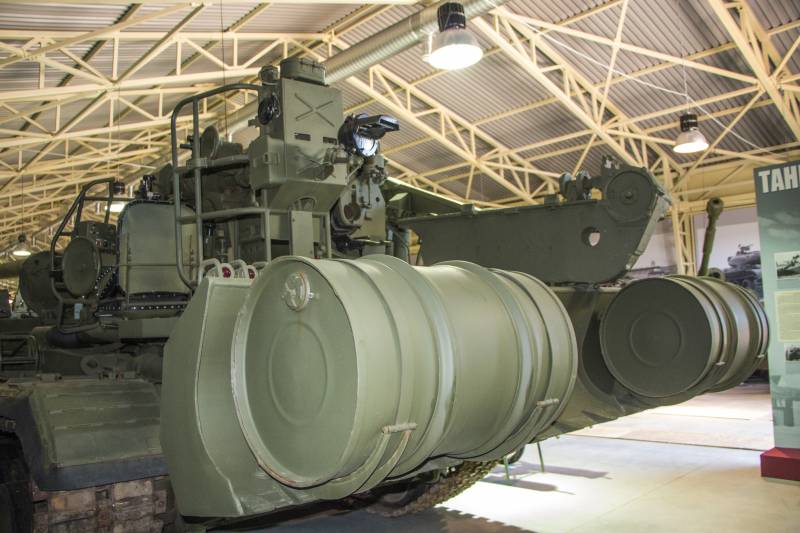
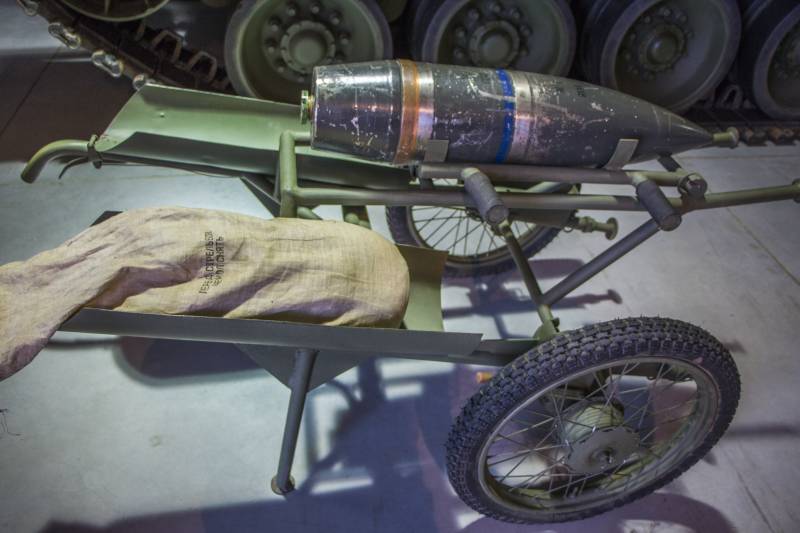
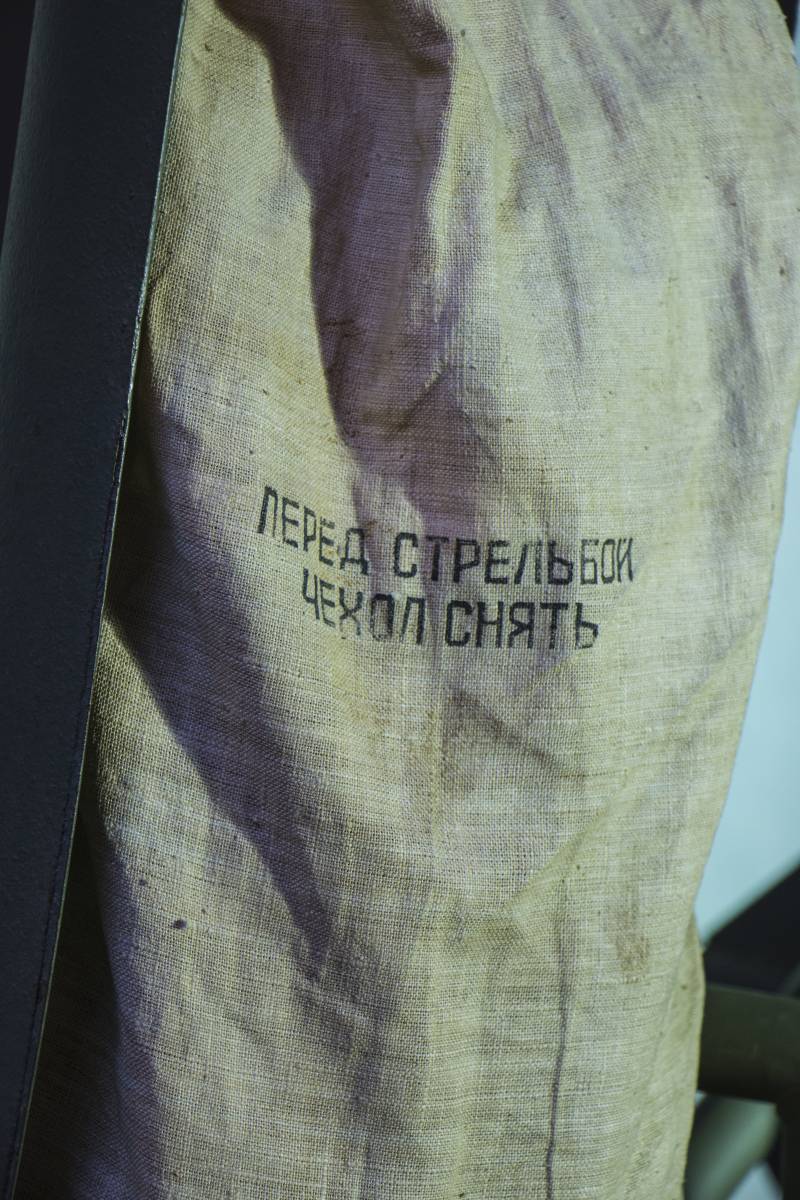
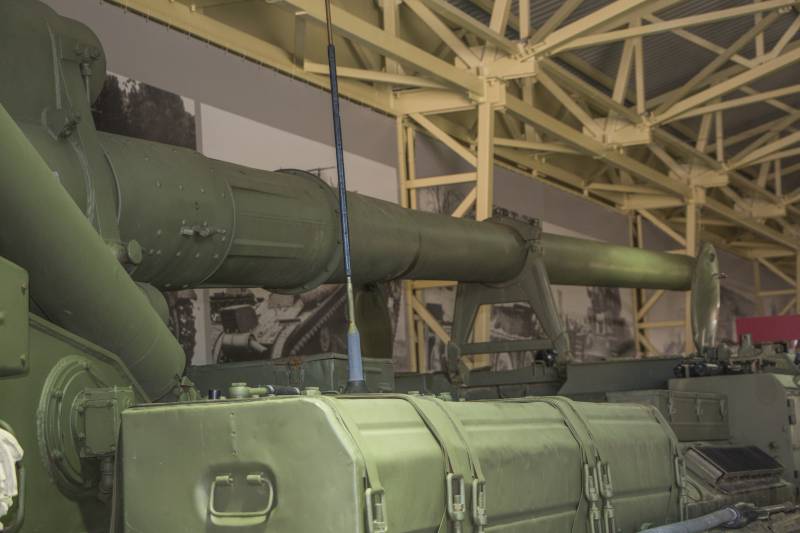
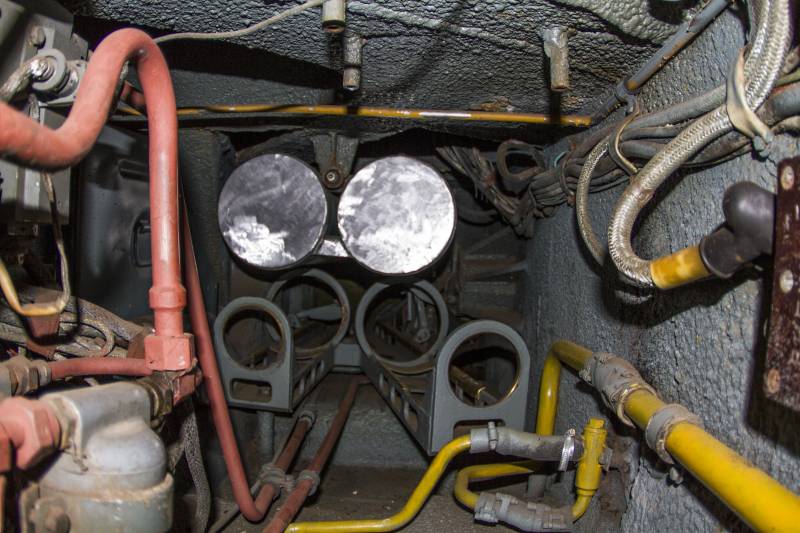
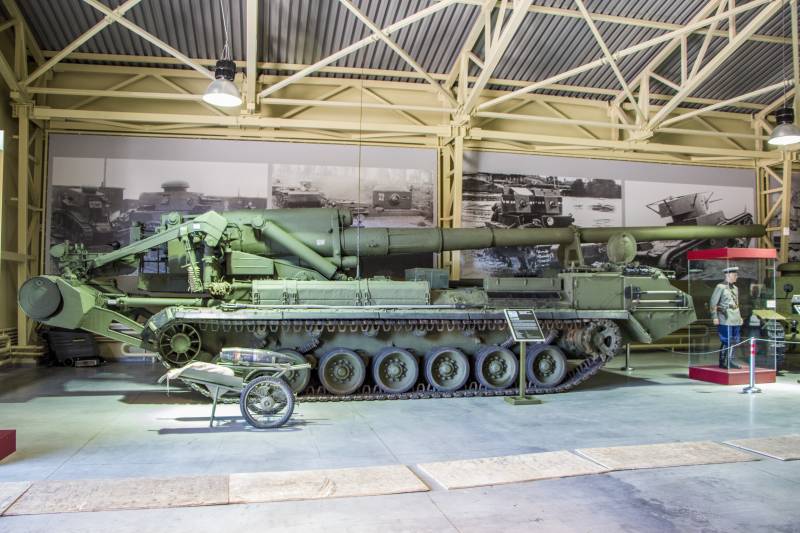
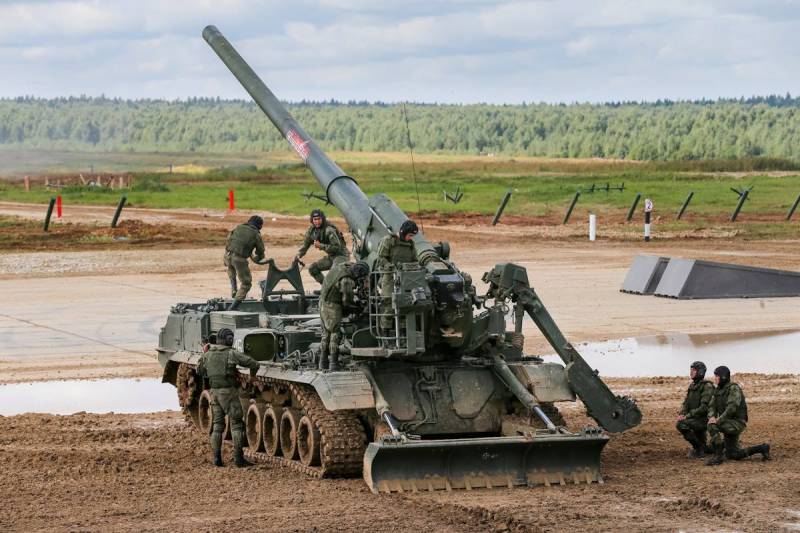
Information